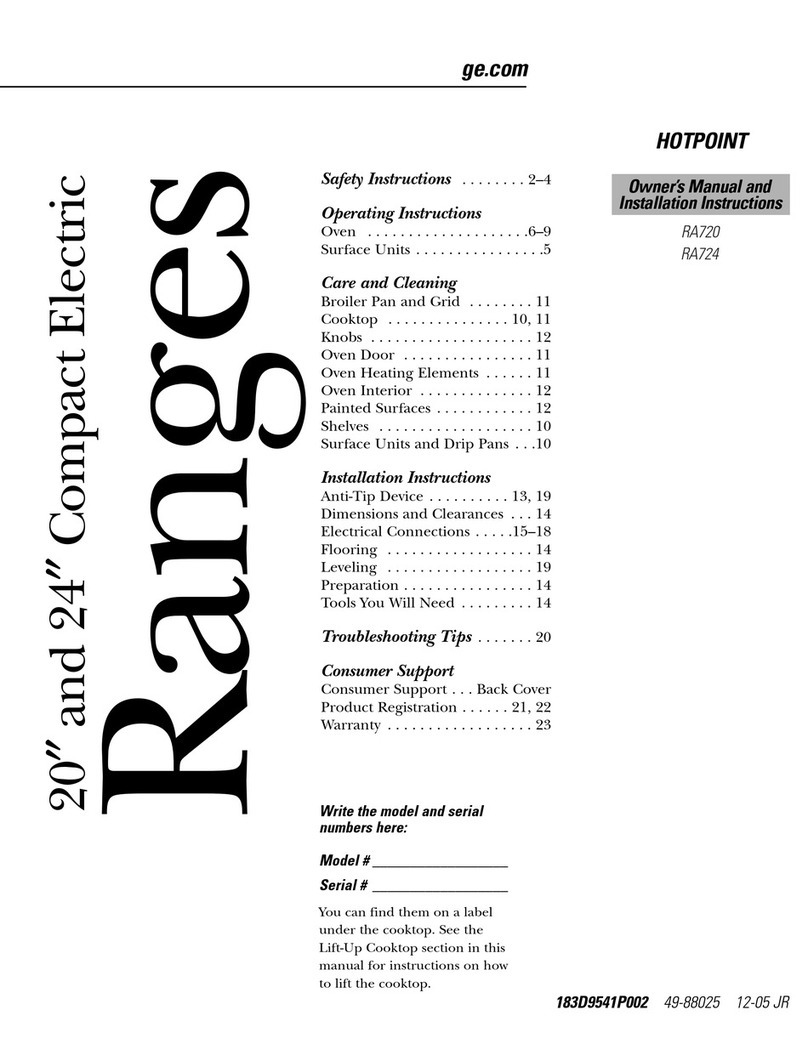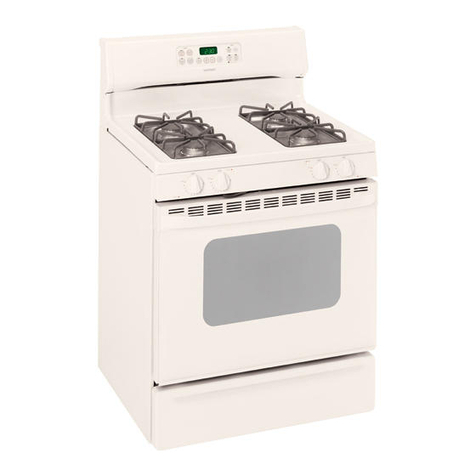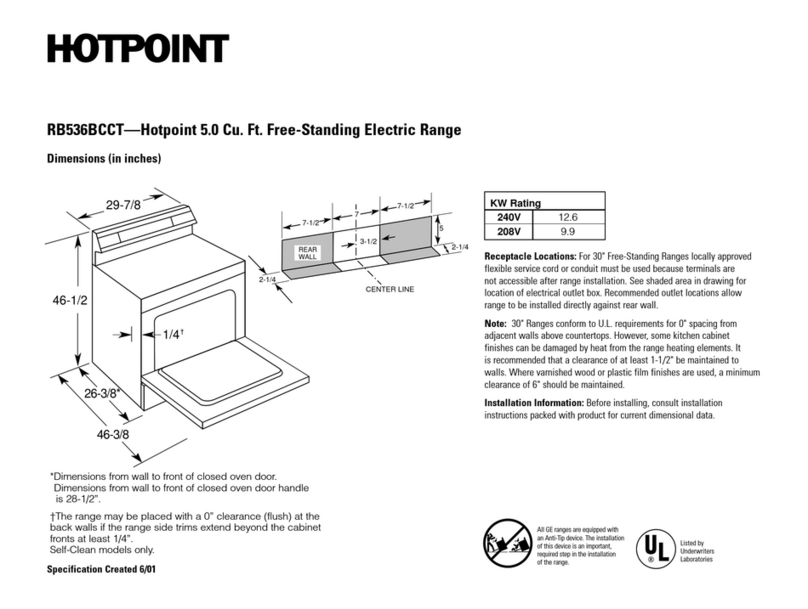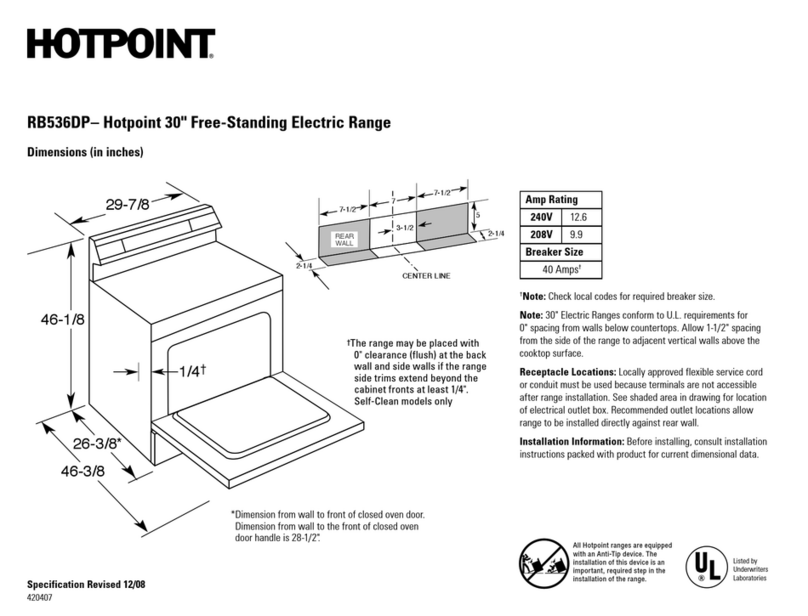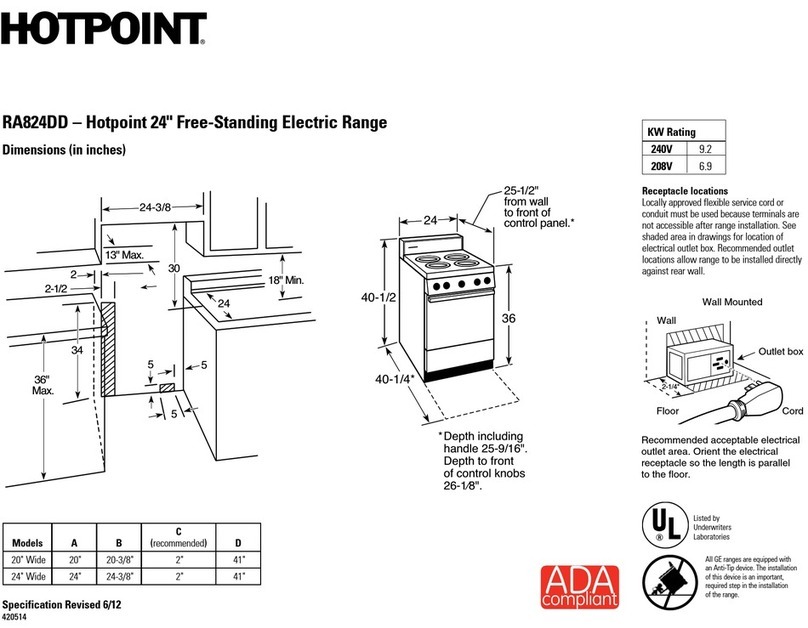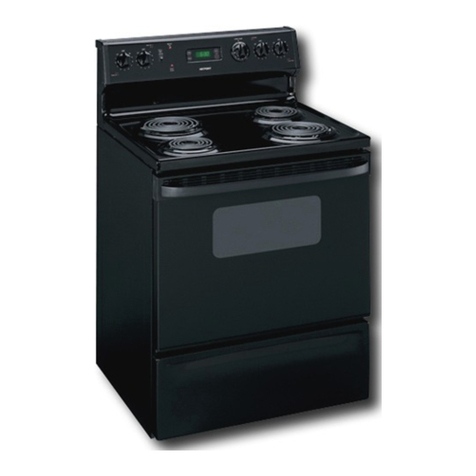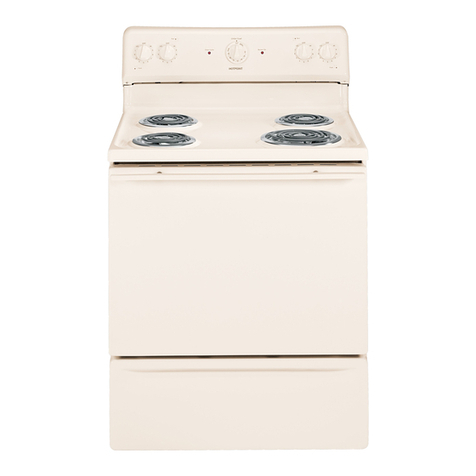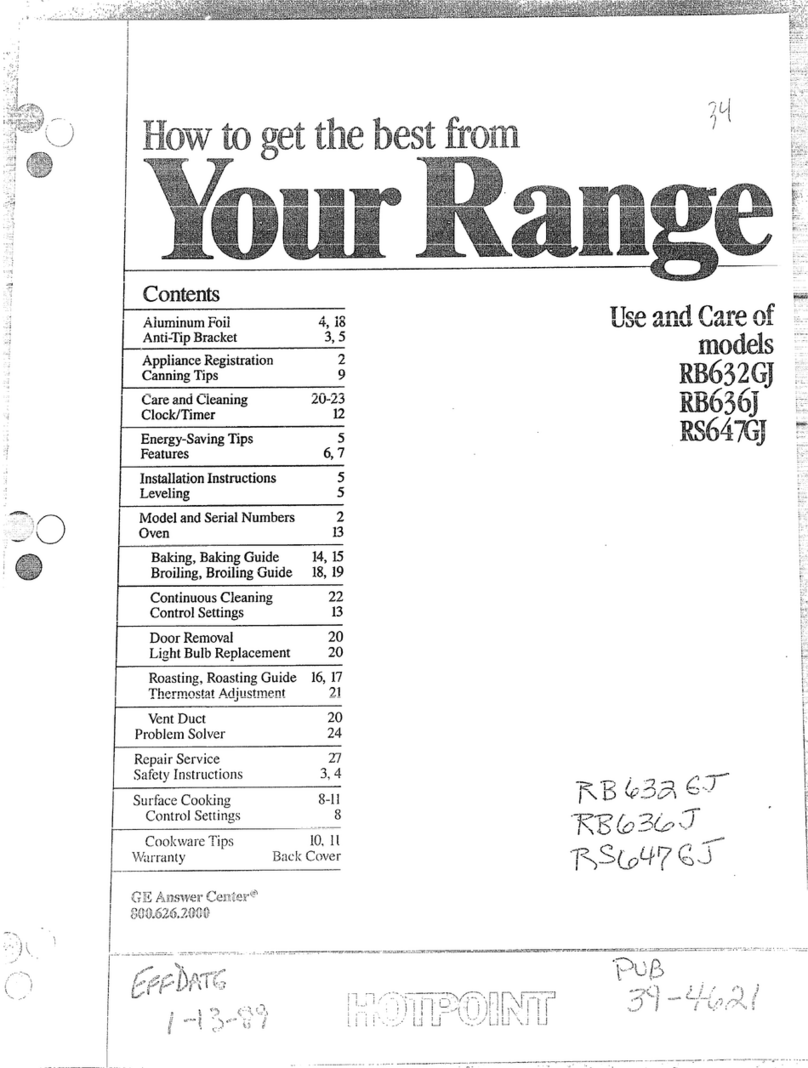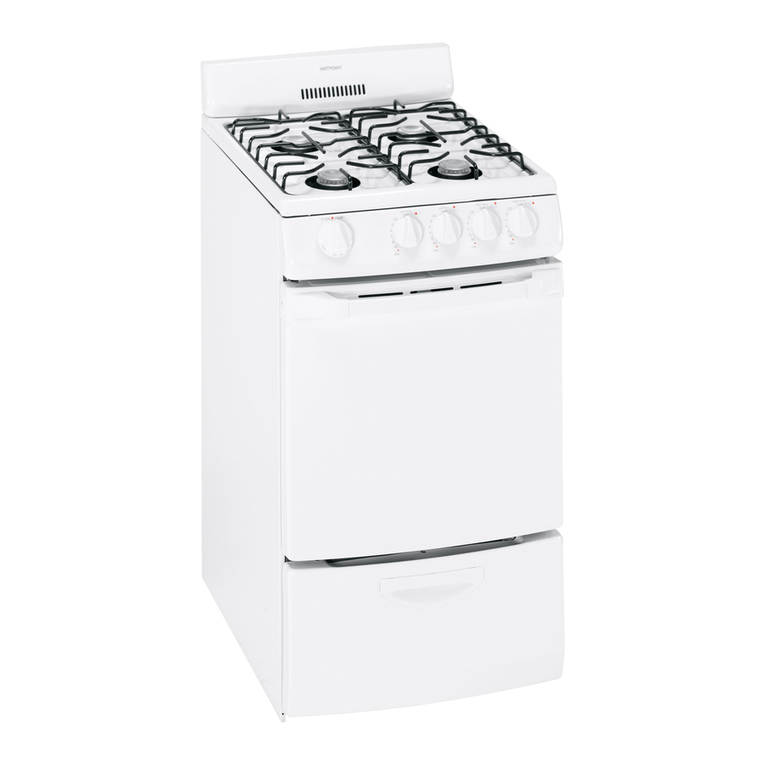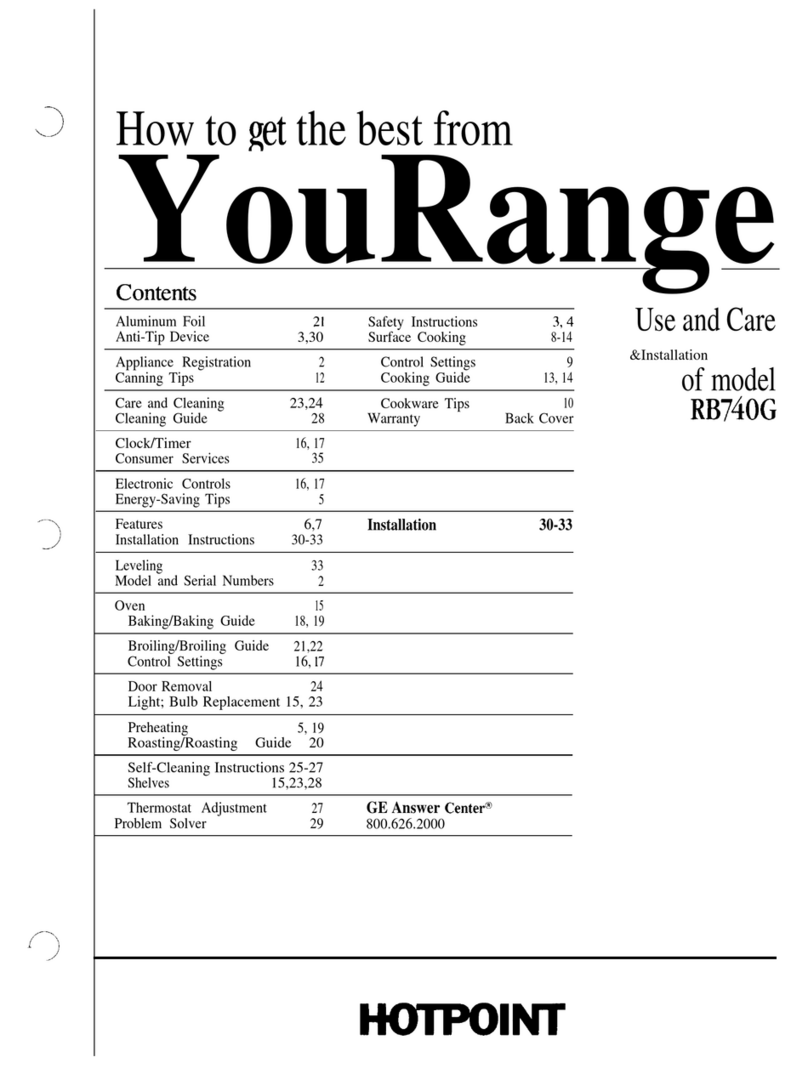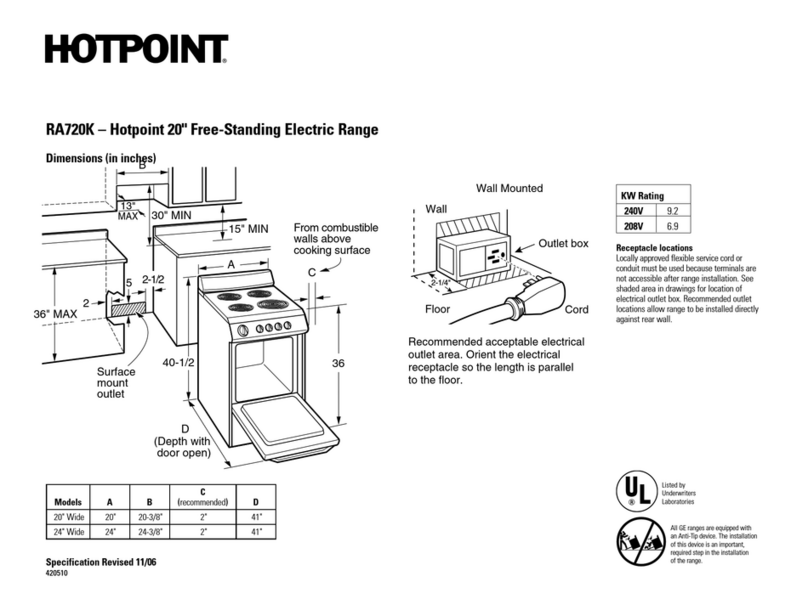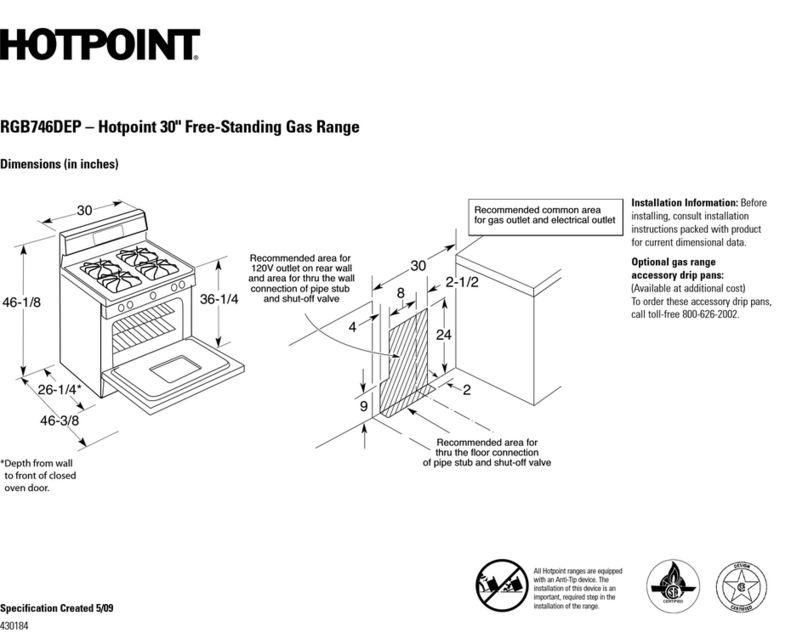Your range, like many other
household items, is heavy and
can settle into soft floor coverings
such as cushioned vinyl or
carpeting.
When moving the range
on this type of flooring, use care,
and it is recommended that these
simple and inexpensive instructions
be followed.
The range should be installed on
a l/4-inch-thick sheet of plywood
(or similar material) as follows:
Men
thefior
covering
eds
d
the
front of the
mnge,
the area
tiat
the
range will rest on should be built
up with plywood to the same level
or higher than the floor covering.
This will allow the range to be
moved for cleaning or servicing.
Leveling screws are located on
each comer of the base of the
range. Remove the bottom drawer
and you can level the range on
an uneven floor with the use of
a
nutdriver.
To remove drawer, pull drawer
out
all
the way, tilt up the front
and take it out. To replace
drawer, insert glides at back of
drawer beyond stop on range glides.
Lift drawer if necessary to insert
easily. Let front of drawer down,
then push into close.
One of the rear leveling screws
will
engage
the Anti-Tip device
(allow for some side to side
adjustment). Allow a minimum
clearance of 1/8” between the range
and the leveling screw that is to be
installed into the Anti-Tip device.
Surface
Cooting
●
Use cookware of medium weight
aluminum, with tight-fitting covers,
and flat bottoms which completely
cover the heated portion of the
surface unit.
●
Cook fresh vegetables with a
minimum amount of water in a
covered pan.
●
Watch foods when bringing them
quic~y
to cooking temperatures at
high heat. When food reaches
cooking temperature, reduce heat
immediately to lowest setting that
will keep it cooking.
●
Use residual heat with surface
cooking whenever possible. For
example, when cooking eggs in the
shell, bring water and eggs to boil,
then turn to OFF position and
cover with lid to complete the
cooking.
●
Use correct heat setting for
cooking task:
HI—to start cooking (if time
allows, do not use high heat to
start).
MEDIUM HI—quick browning.
MED—s1ow frying.
WARM—finish cooking most
quantities, simmer-double boiler
heat, finish cooking, and special
for small quantities.
LO—to maintain serving
temperature of most foods.
●
When boiling water for tea or
coffee, heat only amount needed.
It is not economical to boil a
container
fill
of water for one
or two cups.
Oven
Cooting
●
Preheat oven only when
necessary. Most foods will cook
satisfactorily without preheating.
If you find preheating is necessary,
watch the electronic oven display,
and put food in oven promptly
after the selected temperature is
displayed and the oven signals.
●
Always turn oven off before
removing food.
●
During baking, avoid frequent
door openings. Keep door open as
short a time as possible if it is
opened.
●
Be sure to wipe up excess spillage
before starting the self-cleaning
operation.
●
Cook complete oven meals
instead of just one food item.
Potatoes, other vegetables, and
some desserts will cook together
with a main-dish casserole, meat
loaf, chicken or roast. Choose
foods that cook at the same
temperature and in approximately
the same time.
●
Use residual heat in the oven
whenever possible to finish
cooking casseroles, oven meals,
etc. Also add rolls or precooked
desserts to warm oven, using
residual heat to warm them.
